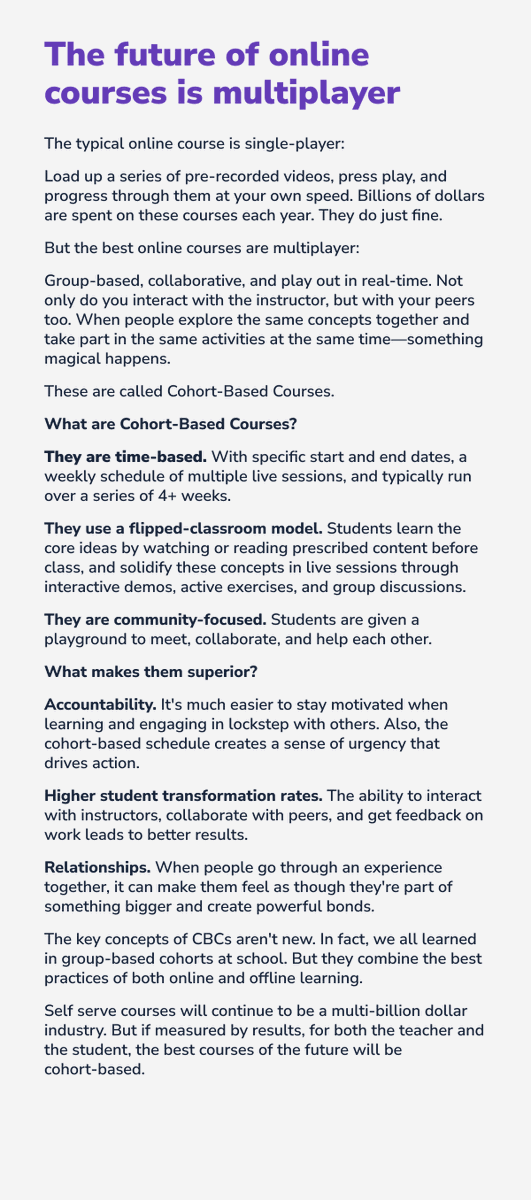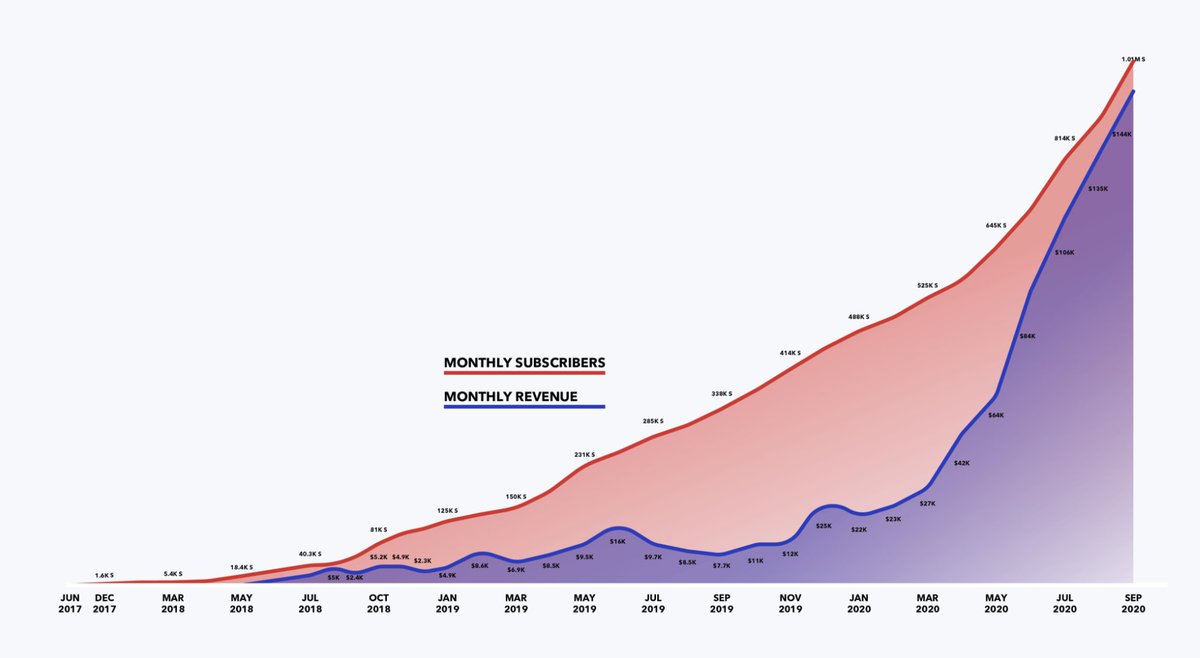
The idea of recurring revenue sounds great, but don't be fooled—memberships are not the passive income you're looking for.
It's income, but there's nothing passive about it. 🧵👇
It's income, but there's nothing passive about it. 🧵👇

Creators have many monetization options, but the wrong choice in the wrong situation can lead to less money and more work.
Beware of these concepts before starting a membership:
Beware of these concepts before starting a membership:
📉 Lifetime value
Memberships have average LTVs (price * retained billing cycles). How many billing cycles do people stick around for?
Memberships have average LTVs (price * retained billing cycles). How many billing cycles do people stick around for?
Patreon suggests that the average amount of time a patron remains a member is about 3 months. If your membership costs $15 and members stick around for 3 months, your LTV is $45.
Wouldn’t you be better off building a one-time product that you can sell for $100?
Wouldn’t you be better off building a one-time product that you can sell for $100?

🔥 You need scale
Memberships are priced much lower than one-time products, so you need a larger customer base. Patreon estimates that the average patron will pay roughly $7, and a YouTuber with 30k subscribers will earn between $315 - $1575 / m on their platform.
Memberships are priced much lower than one-time products, so you need a larger customer base. Patreon estimates that the average patron will pay roughly $7, and a YouTuber with 30k subscribers will earn between $315 - $1575 / m on their platform.

📵 Restricted content distribution
Putting your best content behind a paywall means you can’t use it for growth. Members can't share it. Search engines can't find it. If possible, smaller creators should prioritize audience growth over short-term monetization.
Putting your best content behind a paywall means you can’t use it for growth. Members can't share it. Search engines can't find it. If possible, smaller creators should prioritize audience growth over short-term monetization.
🛠 Your product is never done
When you have a membership, you have to keep creating more value to keep customers around. That means you have less time to focus on marketing to bring in new members. With a one-time product, you build it once and it's done.
When you have a membership, you have to keep creating more value to keep customers around. That means you have less time to focus on marketing to bring in new members. With a one-time product, you build it once and it's done.
There are plenty of alternatives to memberships, including:
∙ One-time sale products: courses, downloadables, ebooks, physical products, merch.
∙ Ads: AdSense, sponsorships, affiliate links.
∙ Services: consulting, coaching, or one-off engagements.
∙ Donations and tips.
∙ One-time sale products: courses, downloadables, ebooks, physical products, merch.
∙ Ads: AdSense, sponsorships, affiliate links.
∙ Services: consulting, coaching, or one-off engagements.
∙ Donations and tips.
Memberships can be great in the right conditions, but be aware of the downsides. If you're monetizing for the first time, you might want to consider the other options first.
• • •
Missing some Tweet in this thread? You can try to
force a refresh







